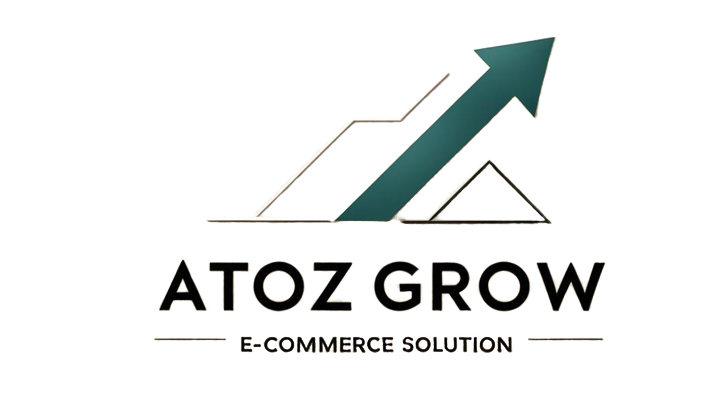The New Reality: Amazon FBA Fee Increases in 2025
Amazon FBA sellers are facing unprecedented challenges in 2025, with fulfillment costs rising by an average of $0.22 per unit across various product categories. This significant increase has squeezed profit margins and forced sellers to completely rethink their pricing strategies and operational approaches.
With over 60% of Amazon sales coming from independent sellers averaging $290,000 in annual revenue, understanding and managing these costs has become critical for business survival and growth.
Breaking Down the 2025 FBA Fee Structure
Current Fee Categories and Increases
Storage Fees:
- Standard-size items: $0.87 per cubic foot (January-September)
- Oversize items: $0.56 per cubic foot (January-September)
- Peak season surcharge: Additional $2.40 per cubic foot (October-December)
- Long-term storage: $11.25 per cubic foot (items stored 271-365 days)
Fulfillment Fees by Size:
- Small standard-size: $3.06-$3.33 (increased from $2.84-$3.11)
- Large standard-size: $4.09-$9.73 (increased from $3.87-$9.51)
- Small oversize: $9.73-$21.21 (increased from $9.51-$20.99)
- Medium oversize: $19.05-$33.42 (increased from $18.83-$33.20)
Additional Cost Factors:
- Returns processing: $3.50-$5.35 per item
- Removal fees: $0.50-$0.65 per item
- Disposal fees: $0.30-$0.40 per item
- Prep service fees: $1.00-$4.00 per item
Strategic Cost Management Approaches
1. Product Mix Optimization
Profitability Analysis Framework: Create a comprehensive profitability matrix for each product:
- Revenue per unit minus total FBA costs
- Contribution margin percentage calculation
- Velocity-based profitability assessment
- Seasonal variation impact analysis
High-Margin Product Focus:
- Products with 40%+ profit margins after all FBA costs
- Fast-moving inventory (30+ day velocity)
- Low return rates (<5%)
- Minimal prep requirements
2. Inventory Optimization Strategies
Smart Storage Management:
- Just-in-time inventory: Reduce long-term storage fees
- Seasonal planning: Ship inventory 30-45 days before peak periods
- Split shipments: Use multiple smaller shipments vs. large bulk orders
- Inventory performance index (IPI) optimization: Maintain above 450
Storage Cost Reduction Tactics:
- Product bundling: Combine slow-moving items with fast sellers
- Removal orders: Remove low-performing inventory before long-term fees
- Liquidation strategies: Discount slow movers to clear storage space
- Alternative storage: Use 3PL services for excess inventory
3. Pricing Strategy Adjustments
Dynamic Pricing Models:
- Cost-plus pricing: Factor in all FBA fees + desired margin
- Competitive pricing: Monitor competitor adjustments to fee increases
- Value-based pricing: Emphasize unique selling propositions
- Bundle pricing: Spread fixed costs across multiple items
Price Increase Implementation:
- Gradual increases: 5-10% increments over 60-90 days
- A/B testing: Test price points to find optimal balance
- Customer communication: Explain value improvements
- Competitive monitoring: Track market responses
Alternative Fulfillment Strategies
FBM (Fulfillment by Merchant) Analysis
When FBM Makes Sense:
- High-value, low-volume products
- Items with high return rates
- Products requiring special handling
- Seasonal items with short selling windows
FBM Cost Considerations:
- Shipping costs: Compare with FBA fulfillment fees
- Time investment: Calculate hourly labor costs
- Storage requirements: Factor in warehouse/space costs
- Prime eligibility: Evaluate Seller Fulfilled Prime options
Hybrid Fulfillment Approaches
Multi-Channel Strategy:
- FBA for core products: Best sellers with proven demand
- FBM for test products: New launches and low-volume items
- 3PL partnerships: For oversize or specialized products
- Direct shipping: For high-margin, custom items
Cost Reduction Techniques
1. Packaging Optimization
Dimensional Weight Optimization:
- Right-size packaging: Minimize dimensional weight charges
- Product design modifications: Reduce packaging requirements
- Multi-pack strategies: Combine items to improve cost efficiency
- Packaging material selection: Balance protection with weight
2. Prep Service Alternatives
In-House Prep Setup:
- Initial investment: $500-$2,000 for basic prep setup
- Break-even analysis: Calculate prep volume requirements
- Quality control: Ensure Amazon compliance standards
- Time vs. cost trade-offs: Evaluate labor expenses
Third-Party Prep Services:
- Prep centers: $0.50-$2.00 per item (vs. Amazon’s $1.00-$4.00)
- Geographic advantages: Reduce shipping costs to fulfillment centers
- Scalability benefits: Handle volume fluctuations
- Specialization options: Services for specific product types
3. Returns Management
Return Rate Reduction:
- Improved product descriptions: Reduce expectation mismatches
- Quality photography: Show products from multiple angles
- Size charts and guides: Prevent sizing issues
- Customer education: Provide usage instructions
Returns Processing Optimization:
- Reimbursement tracking: Monitor and claim eligible refunds
- Condition assessment: Maximize sellable returns
- Disposal vs. return decisions: Evaluate cost-effectiveness
- Return prevention programs: Proactive customer service
Financial Planning and Analysis
Comprehensive Cost Tracking
Essential Metrics Dashboard:
- True profit per unit: Revenue – (COGS + all FBA fees + advertising)
- FBA cost percentage: FBA fees as % of selling price
- Inventory turnover rate: Times per year inventory cycles
- Storage utilization efficiency: Sales per cubic foot stored
Monthly Financial Review:
- Profit margin trends: Track changes over time
- Cost category analysis: Identify largest expense areas
- Product performance ranking: ROI-based prioritization
- Cash flow projections: Plan for fee increases
Break-Even Analysis 2.0
Updated Calculations for 2025:
Break-Even Price = (COGS + FBA Fees + Advertising Cost + Other Expenses) ÷ (1 – Desired Profit Margin)
Example Calculation:
- Product Cost: $10
- FBA Fees: $4.50 (increased from $4.00)
- Advertising: $3.00
- Other Expenses: $1.50
- Total Costs: $19.00
- For 25% profit margin: $19.00 ÷ 0.75 = $25.33 minimum selling price
Technology Solutions for Cost Management
Automated Monitoring Tools
Cost Tracking Software:
- InventoryLab: Comprehensive profitability analysis
- RestockPro: Inventory and cost optimization
- ManageByStats: Real-time fee tracking and alerts
- SellerApp: Performance and cost analytics
Key Features to Look For:
- Real-time fee calculation updates
- Automated profit margin alerts
- Historical cost trend analysis
- Bulk pricing update capabilities
- Integration with accounting systems
Data-Driven Decision Making
Analytical Approaches:
- ABC analysis: Categorize products by profitability contribution
- Cohort analysis: Track product performance over time
- Seasonal adjustment models: Plan for fee variations
- Scenario planning: Model different cost structures
Long-Term Strategic Adaptations
Business Model Evolution
Diversification Strategies:
- Brand building: Reduce price sensitivity through differentiation
- Direct-to-consumer channels: Supplement Amazon sales
- International expansion: Leverage different fee structures
- Private label development: Improve margin control
Operational Improvements:
- Supplier negotiations: Reduce COGS to offset fee increases
- Process automation: Minimize manual labor costs
- Quality improvements: Reduce return and customer service costs
- Scale economies: Leverage volume for better terms
Future-Proofing Your Business
Preparing for Continued Changes:
- Flexible pricing models: Systems that can quickly adapt
- Diversified supplier base: Reduce single-source dependencies
- Financial reserves: Buffer for unexpected cost increases
- Continuous learning: Stay informed about Amazon policy changes
Action Plan: Implementing Cost Management
Immediate Actions (Week 1-2)
- Audit current profitability for all products
- Calculate new break-even points with 2025 fees
- Identify underperforming SKUs for removal or repricing
- Set up cost tracking systems and alerts
Short-term Strategies (Month 1-3)
- Implement pricing adjustments based on new cost structure
- Optimize inventory levels to reduce storage fees
- Evaluate alternative fulfillment for select products
- Negotiate with suppliers for better terms
Long-term Planning (Month 3-12)
- Develop new product criteria with higher margin requirements
- Build direct-to-consumer channels to reduce Amazon dependency
- Invest in process improvements and automation
- Create financial reserves for future fee adjustments
Conclusion: Thriving Despite Rising Costs
The 2025 FBA fee increases represent a significant challenge, but they also create opportunities for prepared sellers. By implementing comprehensive cost management strategies, optimizing operations, and maintaining focus on profitability over volume, sellers can not only survive but thrive in this new environment.
Success requires a fundamental shift from revenue-focused to profit-focused thinking. Those who master cost management while maintaining competitive advantages will emerge stronger and more resilient.
The key is taking immediate action: audit your current situation, implement tracking systems, and begin optimization efforts today. The sellers who adapt quickly will maintain their competitive edge while others struggle with the new reality.
Start your cost management transformation now – your future profitability depends on the actions you take today.

